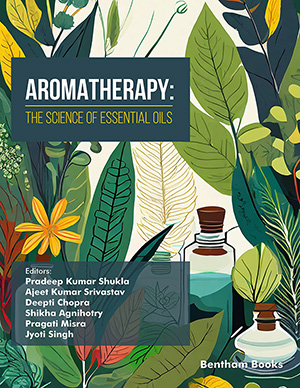
Abstract
Objective: The objective of the present work was to achieve enhanced site-specific delivery of linezolid (LNZ) to the lung by developing solid lipid nanoparticles (SLN) as a carrier for dry powder inhalers (DPI).
Methods: The LNZ-loaded SLN (LNZ-SLN) were prepared by hot homogenization method by using Stearic acid, Tween 80, and Pluronic F-68 and further compared with the conventional form of DPI. The developed SLN were evaluated for physical characteristics, In vitro diffusion study, In vitro lung deposition by Andersen Cascade Impactor (ACI), In vitro cell viability study, and acute toxicity of lung tissues.
Results: The particle size, zeta potential, mass median aerodynamic diameter, and fine particle fraction of the DPI were found to be 1.23 ± 0.07 μm, -10 mV, 1.02 ± 0.04 μm, 44.17 ± 0.73% respectively which revealed the potential for pulmonary delivery. The encapsulation efficiency was 81 ± 2.08% and the biphasic release pattern was observed from prepared SLN at pH 7.4.
Conclusion: The initial burst release of 30% and followed by controlled release (100%) was observed for 72h. Differential scanning calorimetry and powder Xray diffraction pointed out the amorphous nature of the LNZ. The Transmission electron microscopy and Scanning electron microscopy reflected the encapsulation of LNZ in SLN. Furthermore, In vitro cell viability study and the histopathological study revealed the biocompatibility and safety of the formulation. The LNZ-SLN DPI ascertained an improved lung deposition with controlled release and the least toxicity as compared to the conventional form of DPI which confirmed its feasibility for pulmonary administration.
Keywords: Linezolid, Solid-lipid nanoparticle, Dry powder inhaler, Andersen cascade impactor, Cell viability study, Acute toxicity study.
[http://dx.doi.org/10.1016/j.pop.2013.06.003] [PMID: 23958367]
[http://dx.doi.org/10.3109/21691401.2014.962745] [PMID: 25365354]
[http://dx.doi.org/10.1615/CritRevTherDrugCarrierSyst.2014008285]
[http://dx.doi.org/10.3109/10717544.2014.920428] [PMID: 24870203]
[http://dx.doi.org/10.1136/bmj.332.7551.1194] [PMID: 16709993]
[http://dx.doi.org/10.1016/j.ijpharm.2014.12.009] [PMID: 25499020]
[http://dx.doi.org/10.1111/j.1753-6405.2012.00928.x]
[http://dx.doi.org/10.3390/pharmaceutics12121196] [PMID: 33321797]
[http://dx.doi.org/10.4084/mjhid.2014.070] [PMID: 25408856]
[http://dx.doi.org/10.1101/cshperspect.a017863] [PMID: 25918181]
[http://dx.doi.org/10.1016/j.nano.2015.01.007] [PMID: 25659645]
[http://dx.doi.org/10.1016/j.addr.2016.05.011] [PMID: 27212477]
[http://dx.doi.org/10.1016/B978-0-323-46143-6.00022-1]
[http://dx.doi.org/10.4103/0970-2113.92361] [PMID: 22345913]
[http://dx.doi.org/10.1016/j.ejpb.2013.08.013] [PMID: 24007657]
[http://dx.doi.org/10.1093/jac/dkr072] [PMID: 21521707]
[http://dx.doi.org/10.1093/jac/dkg248] [PMID: 12730139]
[http://dx.doi.org/10.1186/2047-783X-15-12-533] [PMID: 21163728]
[http://dx.doi.org/10.1016/j.jddst.2020.102013]
[http://dx.doi.org/10.3109/10731199.2012.702316] [PMID: 22889361]
[http://dx.doi.org/10.1016/j.colsurfa.2017.10.047]
[http://dx.doi.org/10.2147/DDDT.S127897] [PMID: 28424536]
[PMID: 18019829]
[http://dx.doi.org/10.1007/s11095-010-0201-z] [PMID: 20625801]
[http://dx.doi.org/10.3109/02770903.2015.1028075] [PMID: 26037396]
[http://dx.doi.org/10.1615/CritRevTherDrugCarrierSyst.2014011104]
[http://dx.doi.org/10.1016/j.ijpharm.2015.11.050] [PMID: 26656946]
[http://dx.doi.org/10.4103/0971-6580.155361] [PMID: 25948966]
[http://dx.doi.org/10.1016/j.ijpharm.2012.03.027] [PMID: 22465546]
[http://dx.doi.org/10.1179/1753555714Y.0000000163]
[http://dx.doi.org/10.1016/j.jtusci.2016.11.003]
[http://dx.doi.org/10.3109/03639045.2015.1093496] [PMID: 26559522]
[http://dx.doi.org/10.1080/02652040802319767] [PMID: 18686142]





























